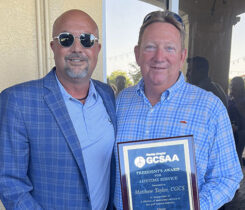SNAGing more golfers
How SNAG Golf and SNAG Futbol plan to get more kids in the game.
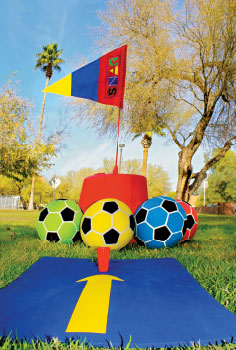 One of my favorite old sayings is, “Be careful what you wish for.” It conjures up all sorts of ideas when applied to golf. We all wish for pretty much the same thing: more players. However, the method of getting those extra bodies onto courses is proving elusive.
One of my favorite old sayings is, “Be careful what you wish for.” It conjures up all sorts of ideas when applied to golf. We all wish for pretty much the same thing: more players. However, the method of getting those extra bodies onto courses is proving elusive.
Golf is suffering from a major player drop-out. Recent National Golf Foundation figures show that of approximately 23 million golfers, 19 percent are over 70 years old and 5 percent are under 30 years old. If you’re in the golf industry those may be two of the scariest stats you have ever seen.
Golf is beginning to awaken from the euphoria of past greatness, as evidenced by the recent arrivals of the new wave of “grow the game” initiatives such as Hack Golf, Golf 2.0 and now FootGolf. Golf officials are considering doing “something” as an industry but are just not sure about the right answer.
At first blush, FootGolf seems a bit goofy. You are now going to play FootGolf on a regulation golf course with a soccer ball and no clubs — you kick the ball. This requires the superintendent to cut 22-inch holes into the turf and create some tee boxes. The hope is that these non-golfers will suddenly fill tee sheets playing FootGolf — or maybe even real golf — in order to save golf, or at least produce some revenue.
This might not be such a bad idea if you look at how soccer has exploded in youth sports, the millions of tykes being chauffeured by “soccer moms” around the community and now the growth of Major League Soccer filling stadiums with thousands of rabid fans. Besides, some note, has anyone noticed just how much soccer fans love to drink? Think of the food and beverage revenues!
What Is golf’s goal?
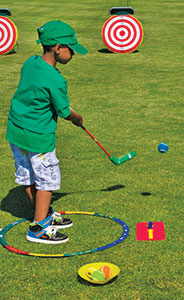 The first FootGolf data from the test sites is now in, and the NGCOA reports that rounds are being played, tee sheets are filling and FootGolf leagues are being formed. This is all good as some real money is being made. FootGolf has made an impact, and this is great news.
The first FootGolf data from the test sites is now in, and the NGCOA reports that rounds are being played, tee sheets are filling and FootGolf leagues are being formed. This is all good as some real money is being made. FootGolf has made an impact, and this is great news.
However, is this really our end goal? Is it our plan to save golf with a new game and a new class of players who just happen to occupy the same space?
It really comes down to business versus customers. Golf needs both, but one is purely short-term thinking and one is long-term survival. Which one is golf trying to achieve, and just what are we actually wishing for?
To create more actual golfers, is the sport betting that these pure soccer players will someday see the error of their ways, give up their favorite sport and just start playing golf instead? “After all,” the game of golf seems to be saying, “can’t they see how much better golf is than soccer?”
What’s likely to happen is that golf courses will gain incremental revenues, players will have some fun, but this model will not produce long-term core golfers. The 20-year-old to 30-year-old age group that FootGolf appeals to is not going to suddenly convert to real golfers in the numbers needed to sustain golf.
The answer lies where it always has: youth involvement. Get ’em young and keep ’em for a lifetime — what a concept. Baseball does it, basketball does it, soccer does it, yet golf does not. We really don’t want to see kids on our courses until about age 10, and for some locations that’s stretching it. Many say 12 is a much better age.
The problem, of course, is that by age 12 kids have chosen other sports in which through years of practice they already excel. When a beginner starts to golf, regardless of age, they are simply “not good.” What kid wants to be “not good?” When you are not good and not wanted, it’s not fun and you are not allowed to actually play — you simply quit. This is golf’s problem today.
Enter SNAG
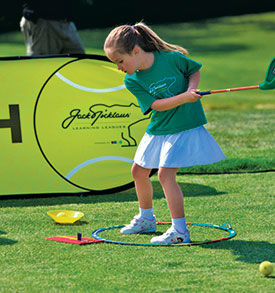 Starting New at Golf (SNAG) has been around for more than 10 years and is a “first-touch” training system to learn golf. First developed by former PGA Tour professionals Terry Anton and Wally Armstrong, SNAG is easy to learn, easy to play and is a ton of fun.
Starting New at Golf (SNAG) has been around for more than 10 years and is a “first-touch” training system to learn golf. First developed by former PGA Tour professionals Terry Anton and Wally Armstrong, SNAG is easy to learn, easy to play and is a ton of fun.
It has exploded internationally, with actual SNAG age-group national championships played in Japan. Europe and New Zealand are booming with SNAG programs, and the First Tee here in the United States is using SNAG and has reached more than 4.5 million children nationwide in parks and schools. Moreover, half of these kids are girls — a key target for growth in golf. Family participation is paramount to growth, but with kids not showing up at golf courses, none of these numbers are reflected in the current NGF stats.
In Kansas, the Midwest PGA Section has spearheaded its own “SNAG-A-School” program, which is now training 100,000 kids a year in every grade school physical education program to learn and play the game of golf. Having every child in a school district introduced to and taught golf in grade school PE is a true growth initiative.
SNAG can be played indoors or outdoors, in any open space. It teaches kids and adults the rules, concepts and basic strokes of golf in a highly successful and fun manner so the transition to an actual golf course is far easier. Using SNAG, the students are not just hitting balls, they are competitively playing holes.
As the school program grows statewide, don’t be surprised if Kansas soon dominates the scene in Junior Golf. Better yet, those golfing boys and girls will someday become golfing parents who will raise golfing children.
And now, SNAG Futbol
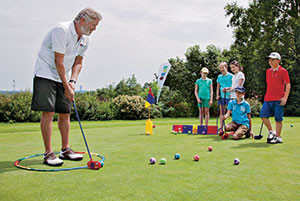
In the U.S., SNAG programs have reached more than 4.5 million children nationwide in parks and schools. In Kansas, it’s in every grade school PE program.
SNAG sees FootGolf as an excellent idea, in fact outstanding, but needing a couple of key tweaks.
So enters SNAG Futbol, SNAG’s version of FootGolf, which is and should be seen as a “gateway” sport, not a separate sport. SNAG Futbol is designed and taught from the onset as a precursor to learning the rules, strategy and basic strokes of golf. It’s an ideal partner to SNAG Golf, especially in PE and with young players who have more physical capabilities with their feet than with a club and ball. Imagine 5- and 6-year-olds who actually claim and believe they are golfers — unheard of in today’s system of developing golfers.
Just as a SNAG golf course can be set up in any open space, SNAG Futbol can also be set up instantly, as all the features, including water and sand bunkers, are all above ground, with no cups to cut. And the length of the holes are scalable to fit the demographic of the players for that day or event.
Regular SNAG has an above-ground 6-inch diameter FlagSticky, which, via a hook and loop material, allows the SNAG golf ball to stick and hole out. SNAG Futbol has a 15-inch diameter above-ground FootSticky and a special soccer ball that also “sticks” via hook and loop material. It plays exactly the same as a 22-inch permanent hole, yet with no agronomic damage.
The SNAG Futbol tee is a flat rubber mat with a large tee to elevate the soccer ball on the first shot, again, totally movable with no agronomic damage. The FootSticky is even slightly elevated so air can circulate underneath to protect the turf. These two tee and FootSticky features might seem minor, but they represent a huge yearly maintenance savings. Nine out of 10 superintendents will opt for no huge holes versus the above-ground FootSticky.
Play 6 & Kick 6
SNAG has now invested in and piloted a program called “SNAG Play 6 & Kick 6,” in which a six-hole SNAG golf course and a six-hole SNAG Futbol course is created where the player plays both versions in a single round. (SNAG is designed for 6 holes per side versus 9 holes.) Again, long-term thinking creates core golfers by teaching and playing golf and Futbol in a single round versus choosing a single playing method. A full SNAG Futbol course with all the needed equipment and balls is a one-time fee, can be set up anywhere and will last for years. SNAG is betting this is how golf reaps both ROI and long-term player benefits.
So, as we raise a glass and toast innovation, let’s give a cheer to the lads of the pitch and welcome them to our links. However, the shrewd operator and owner will “be careful of what you wish for” and will keep one eye on the prize of actually wishing for more golf customers versus just a few more tee times, and will develop programs to do both.
Photos by: Lindsey Sams | John R. johnson/golfphotos.com









